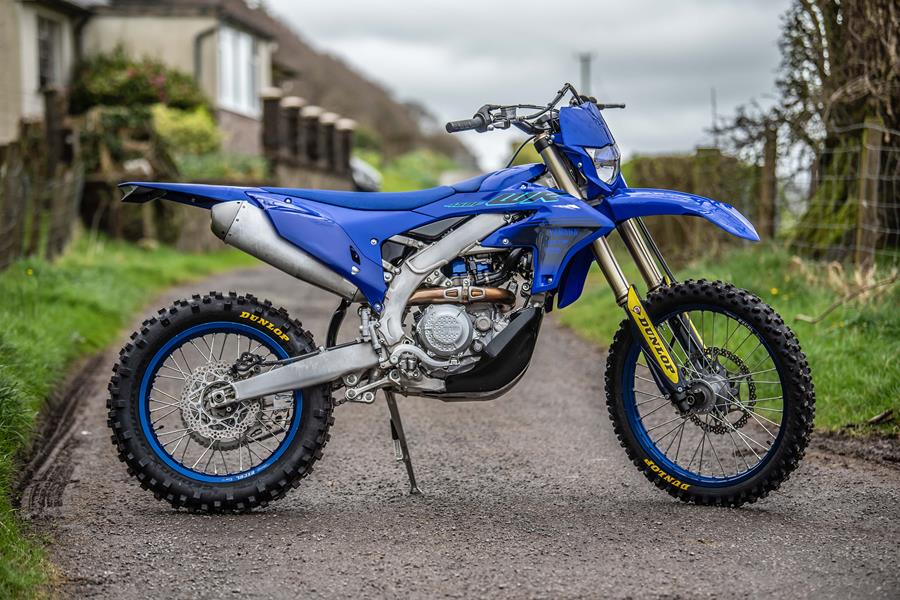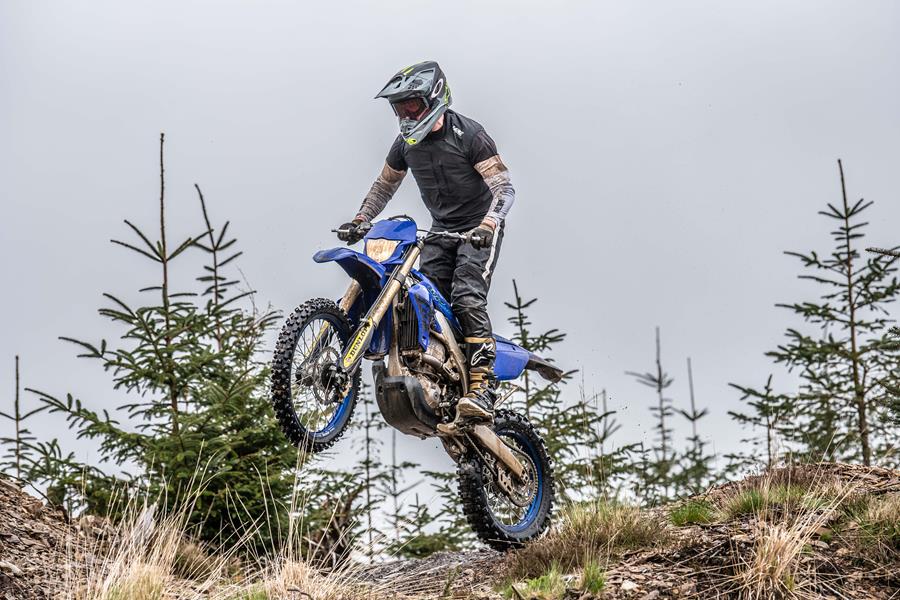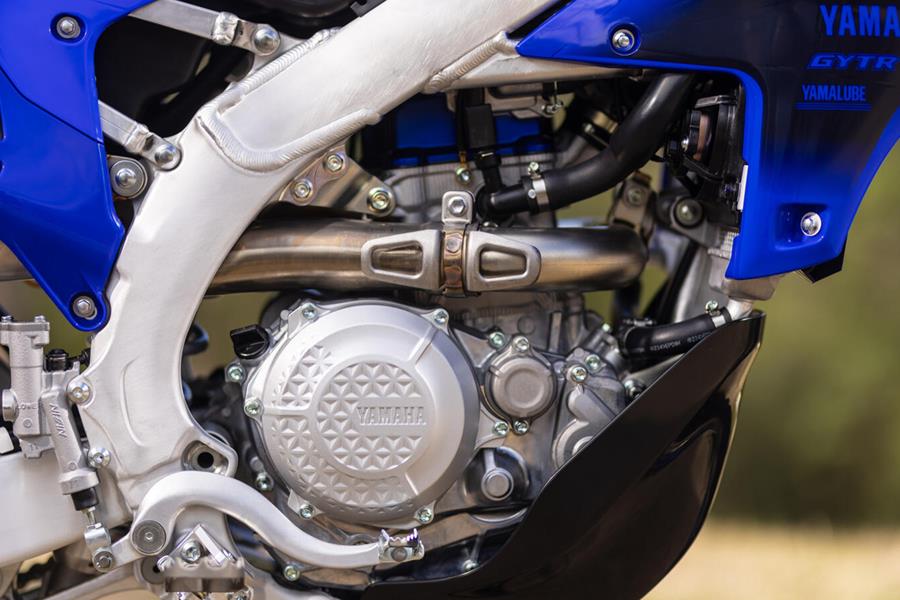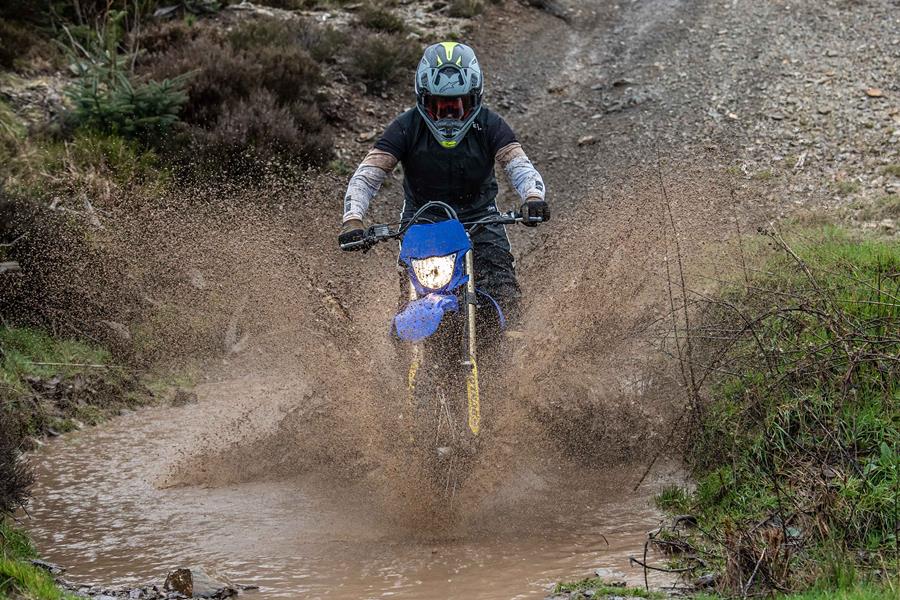
2024 Yamaha WR450F: A New Era of Enduro Domination
Overall Rating

Yamaha WR450F: A New Era in Off-Road Performance
Yamaha has completely redesigned its iconic WR450F for 2024, promising a significant leap forward in off-road performance. This overhaul goes far beyond a simple aesthetic update; nearly every component has been redesigned with a focus on rider-friendliness and thrilling performance.
Key Design Changes:
- Engine: The new 449cc, liquid-cooled, single-cylinder engine features a revised cylinder head, intake, and exhaust system, boosting power and torque throughout the rev range.
- Chassis: The frame has been re-engineered for greater rigidity and improved handling, while the suspension has been meticulously tuned for both high-speed stability and precise cornering.
- Ergonomics: The riding position has been optimized for comfort and control, with a new seat, handlebars, and footpegs.
Technical Specifications:
| Feature | Specification |
|---|---|
| Engine | 449cc, liquid-cooled, 4-stroke single |
| Bore x Stroke | 97.0mm x 60.8mm |
| Transmission | 5-speed |
| Suspension (Front) | Kayaba SSS fork |
| Suspension (Rear) | Kayaba shock |
| Fuel Tank Capacity | 7.9L |
| Wet Weight | 113kg |
Key Takeaways:
- Ease of Riding: The changes in ergonomics and suspension significantly improve rider comfort and control, making the WR450F more accessible for riders of all skill levels.
- Performance: The new engine delivers a broad powerband, providing strong acceleration and responsive throttle response for both technical trails and open terrain.
- Handling: The revised frame and suspension work in harmony to deliver precise handling, allowing riders to confidently navigate challenging obstacles and carve corners with greater accuracy.
The 2024 Yamaha WR450F is a true game-changer, building upon the legacy of its predecessors while delivering a more intuitive and thrilling riding experience for riders of all skill levels.
Ride Quality & Brakes

Redesigned for Enhanced Agility
The latest iteration of this 450cc enduro bike boasts a complete redesign geared towards improved handling and maneuverability.
Key Changes:
- Lowered Headstock: The headstock has been lowered by 15mm, contributing to a lower center of gravity and increased agility.
- Narrowed Chassis: The frame has been narrowed, particularly around the airbox, which has been redesigned to eliminate the need for traditional front-facing snorkels. This results in a 50mm reduction in overall width, making the bike more compact and nimble.
- Optimized Mass Distribution: Soft-edge bodywork, a rounded seat, and a focus on centralizing mass further enhance the bike's handling characteristics. This translates to a more intuitive and predictable riding experience, especially in tight, technical terrain.
Practical Implications:
This revised design offers several advantages for enduro riders:
- Improved Cornering: The lower center of gravity and narrower profile allow for tighter cornering and better stability at high lean angles.
- Increased Maneuverability: The bike is easier to maneuver in tight spaces and over obstacles, enhancing rider control and confidence.
- Reduced Fatigue: The optimized mass distribution and narrower design contribute to a more comfortable riding experience, reducing rider fatigue on long rides.
Important Note: The reduced width and lower center of gravity may require riders to adjust their riding style.
Comparison: The revised design significantly differentiates this bike from previous models, offering a more agile and responsive experience compared to its predecessors. The focus on mass centralization and a narrowed profile place it closer to dedicated competition-focused enduro machines.
Engine

Yamaha's Revamped Reverse Cylinder Motor: A Deeper Dive
Yamaha has significantly revamped their reverse cylinder motor for the latest model year. This comprehensive overhaul encompasses numerous key components, resulting in a more powerful and refined engine.
Key Engine Enhancements:
- Cylinder Head and Valvetrain: New cylinder head porting optimizes airflow, while larger 39mm titanium inlet valves improve breathing and increase volumetric efficiency.
- Piston and Cylinder: A redesigned piston and cylinder work in tandem for improved combustion and reduced friction.
- Crankshaft and Balancer: A new crankshaft and balancer contribute to smoother engine operation and reduced vibrations.
- Dry Sump Lubrication: The introduction of a dry sump system improves oil management, allowing for higher engine speeds and reducing oil sloshing under high-g maneuvers.
- Engine Mapping and Traction Control: Advanced engine mapping and traction control systems optimize power delivery and enhance rider control.
Important Notes:
The implementation of titanium inlet valves is notable, as this lightweight material contributes to reduced inertia and faster valve opening and closing times, further boosting performance.
Practical Implications:
These enhancements translate into tangible benefits for riders:
- Increased Power and Torque: The new cylinder head, valves, and piston design deliver a noticeable increase in power and torque across the engine's rev range.
- Enhanced Responsiveness: The combination of optimized porting and engine mapping creates a more responsive and engaging throttle experience.
- Improved Handling and Stability: The dry sump lubrication system, paired with the refined crankshaft and balancer, contribute to better handling and stability, particularly under hard braking and cornering.
Comparison to Similar Technologies:
Yamaha's commitment to innovation and continuous improvement sets them apart from competitors. This thorough engine revamp showcases their dedication to pushing the boundaries of performance and technology.
Reliability & Build Quality

Yamaha WR Series: A Legacy of Quality and Innovation
Yamaha's WR series of dirt bikes has earned a reputation for exceptional quality and reliability, built on a rich history of performance and innovation.
Early Beginnings and Evolution
The first WR models faced challenges with kick-starting, a common issue in early off-road motorcycles. However, the introduction of the electric starter in later models marked a significant turning point, eliminating this obstacle and enhancing rider convenience. This evolution solidified the WR's reputation as a reliable and user-friendly choice for off-road enthusiasts.
The Latest WR: A Fusion of Heritage and Modernity
The current generation of WR models embodies the spirit of its predecessors while incorporating cutting-edge technology and design.
- Engine: The WR boasts a powerful and efficient engine, typically a liquid-cooled, 4-stroke, single-cylinder design, delivering strong torque and reliable performance in demanding off-road conditions.
- Suspension: Advanced suspension systems, often featuring adjustable settings, provide superior handling and control on various terrain.
- Frame: Lightweight and durable frames are engineered for optimal maneuverability and rigidity, ensuring stability and responsiveness.
- Ergonomics: The WR series prioritizes rider comfort and control with ergonomic designs, including rider-friendly seating, handlebar positioning, and overall bike layout.
Key Takeaways
- Yamaha's WR series represents a commitment to quality, reliability, and performance.
- The evolution of the WR has seen the incorporation of user-friendly features like electric starting and advanced suspension systems.
- The latest iteration of the WR offers a compelling blend of heritage and innovative technology.
Practical Implications:
- The WR series is suitable for a wide range of off-road riding styles, from casual trail riding to competitive racing.
- Its reliable performance and enduring design make it a popular choice among seasoned riders and beginners alike.
- The WR's combination of power, handling, and user-friendliness ensures a rewarding riding experience.
Value vs Rivals

Road Legality: A Crucial Factor for Enduro and Trail Bikes
Key Takeaway: While designed for off-road adventures, road legality is a significant consideration for enduro and trail bikes, impacting their practicality and usability.
Important Notes:
- Homologation: This refers to the official approval process for a vehicle to be road-legal in a specific region. It involves meeting safety and emission standards.
- Registration: Individual registration of enduro bikes for road use is now simplified and relatively inexpensive in many jurisdictions.
Technical Specifications:
- EU Type Approval (ECE): This is a common standard for road-legal vehicle approval in Europe.
- DOT (Department of Transportation): This is the US equivalent of ECE, setting standards for vehicle safety and emissions.
Pros and Cons of Road-Legal Enduro Bikes:
Pros:
- Increased Versatility: Ride on public roads, expanding adventure possibilities.
- Convenience: Easier travel to and from trails.
- Legal Compliance: Avoid fines and potential legal issues.
Cons:
- Additional Costs: Registration fees, road tax, insurance.
- Potential Performance Compromises: Road-legal requirements might necessitate modifications impacting off-road performance.
Real-World Applications & Comparison:
- Commuting: A road-legal enduro bike can be used for daily commutes, offering an exciting alternative to traditional motorcycles.
- Adventure Touring: Expand your trips to include road sections, connecting off-road trails and destinations.
Comparison: While traditional dual-sport motorcycles are designed for both road and off-road use, enduro bikes prioritize off-road performance and may require modifications for road legality.
Equipment

Race-Focused Design: Stripping Down for Performance
This competition bike prioritizes raw performance, focusing on the essentials for winning on the track. Features typically found on street bikes, such as heated grips and rider modes, are absent.
Enhanced Engine Performance: Tuning for Power
"The new tuning map is a major win."
This statement highlights the significant improvement in engine performance achieved through a revised tuning map. This map optimizes parameters like fuel injection and ignition timing to deliver increased horsepower and torque throughout the RPM range.
Traction Control: A Controversial Feature
Traction control, a technology commonly implemented on road bikes, has been met with skepticism in the dirt bike community, particularly for smaller displacement bikes.
- Pros: Provides improved stability and control by preventing wheelspin, potentially aiding in faster lap times.
- Cons: Can hinder rider feedback and limit the rider's ability to feel the bike's limits, potentially impacting performance.
Important Notes:
- The effectiveness of traction control on dirt bikes is often debated, with factors like terrain, rider skill, and bike setup playing significant roles.
- In racing situations, some riders believe that traction control can be intrusive and negatively affect their ability to push the bike to its limits.
Real-World Applications
The stripped-down, race-focused design of this bike exemplifies the philosophy of focusing on core performance elements for competitive success. The absence of non-essential features reduces weight and complexity, allowing for a more responsive and agile ride.